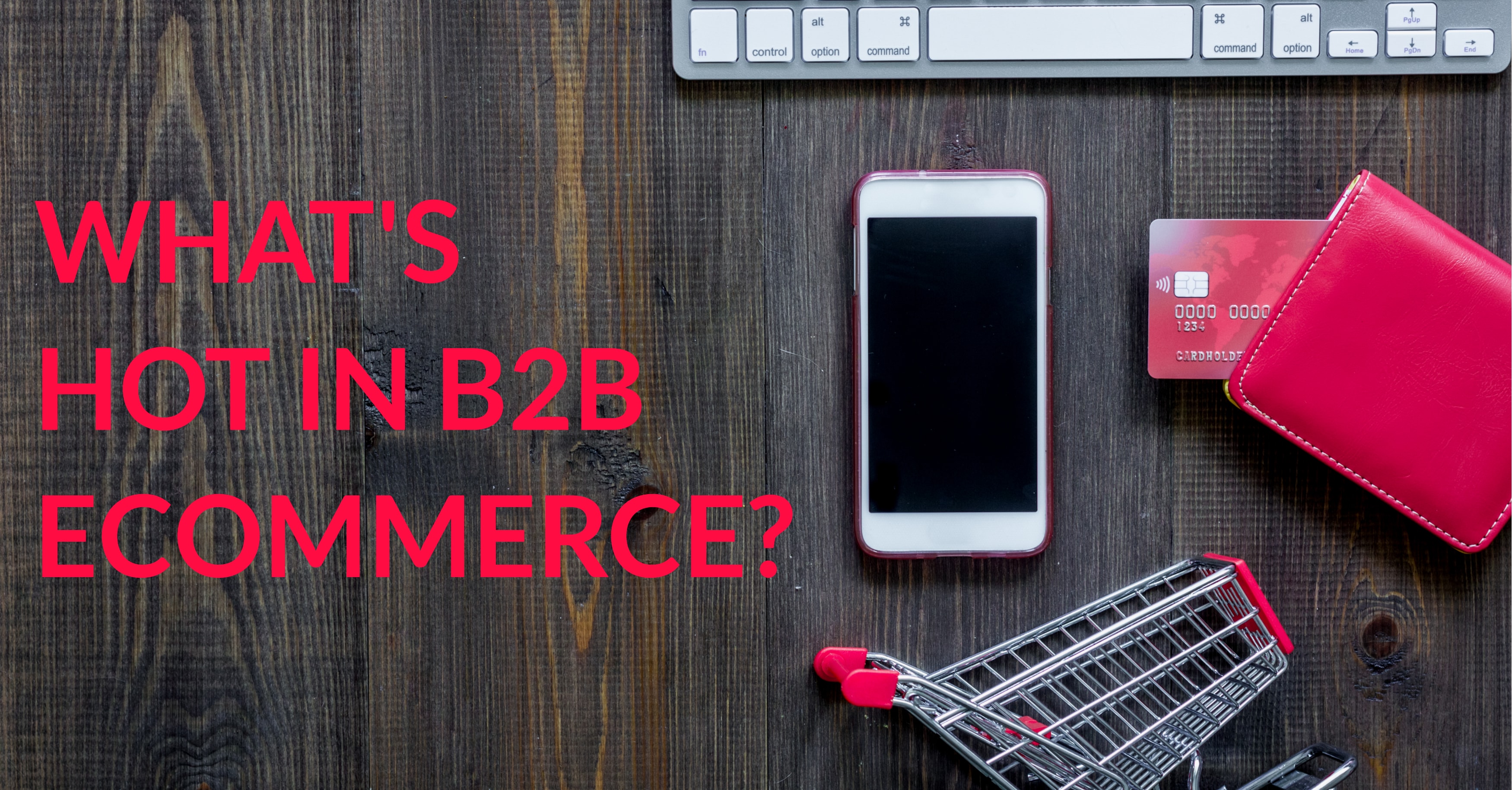
Top B2B eCommerce Trends
Business-to-business (B2B) sellers are increasingly recognizing that eCommerce is essential to win modern customers. But there remains a wide gulf between B2B and B2C (business-to-consumer) eCommerce performance. That’s because B2B sellers still aren’t moving fast enough to adopt the latest eCommerce trends, causing them to miss out on opportunities from buyers who have higher expectations than ever.
To help B2B companies catch up, we’ve put together some tips to help businesses capitalize on eCommerce trends and drive online sales.
Millennial Buyers
Several changes in our business strategies are a result of the rising influence of millennial buyers. As more millennials become corporate buyers and purchasing agents, companies must shift their B2B selling strategies. Millennials don’t want to waste time calling sales reps. They want to make orders instantly on their laptops and mobile devices. They want easy-to-use, intuitive websites to research and select products.
This puts the impetus on B2B sellers to create modern online experiences. With content on your eCommerce site, you can establish yourself as a thought leader in your industry, improve search engine rankings and give consumers the information they crave to make smart purchases. Additionally, images and videos will show consumers your product in action. Chat buttons help millennials reach out to service reps instantly without making a phone call.
You no longer have to design a website from scratch to reach out to a new generation of buyers. A robust eCommerce site includes extensive functionality out of the box, as well as templates and drag-and-drop features to make designing an intuitive website easier than ever.
Mobile Responsiveness
To give millennial buyers and other modern consumers the functionality they crave, make your eCommerce site mobile responsive. A common misconception is that mobile shopping only applies to B2C businesses, but research from Google indicates that mobile plays a significant role in the purchases of 60 percent of B2B buyers. Therefore, site mobility is critical for the B2B buyers journey.
To do this, seek out an eCommerce platform that supports mobile functionality. Optimize your site for small screens, ensuring that buttons and tabs are easy to click with your fingers. Condense rich content, so it doesn’t slow down the load times on smartphones and tablets. You might also want to consider adding a mobile app, which encourages deeper interaction and gives you a chance to send notifications for additional engagement and sales opportunities. With full functionality on a variety of platforms, your eCommerce site can generate business from buyers on the go.
Social Media Connection
It’s no secret that social media plays a major role in B2C sales, but many B2B businesses are unaware of its growing influence in their market. A strong social media presence drives substantial traffic to B2B eCommerce sites, especially when platforms are utilized effectively.
If you don’t know where to start, begin by creating LinkedIn and Twitter accounts, since these tend to be the most beneficial for B2B sales. Every social media post should include a call to action (CTA) that takes the visitor back to your site. Instill trust by posting educational content that demonstrates your deep industry knowledge. Posts should also include images or videos to engage followers and draw them to your website. Original content posted on a consistent schedule often generates more leads than paid social media ads, making it a lucrative strategy for B2B transactions.
Payment Options
An obstacle to B2B eCommerce success is the complex pricing and payment methods that are often involved in transactions. However, some eCommerce platforms support multiple payment and pricing options to smooth over this challenge. Features such as tiered pricing and quick order forms simplify online transactions. You can also provide several payment options, including credit cards, ACH and mobile wallets like Amazon Pay. The ability to easily make payment choices will encourage online sales.
Another key to improving web transactions is integrating your eCommerce and ERP systems. Manually entering data between your software is a time-consuming process that carries the risk of human error. With an integration, changes in pricing and products are automatically transferred into your eCommerce platform to keep your website up-to-date. Once customers submit their order online, your ERP system captures this data to instantly begin processing your order. This streamlined flow accelerates sales and order cycles to improve the overall customer experience. It also maintains accuracy, no matter the complexity of transactions, by eradicating dual data entries.
Wrap Up
B2B businesses can’t afford to ignore eCommerce trends. Today’s consumers don’t have time to waste on a poorly organized, unprofessional website, meaning that they’ll never get to the checkout page. One way to create a modern, functional eCommerce site is to implement Epicor Commerce Connect (ECC). An eCommerce solution that instantly connects with Epicor ERP, Prophet 21, Eclipse and BisTrack, ECC enables users to launch sophisticated sites without coding or graphic design knowledge. It leverages Magento’s premier platform to power mobile responsiveness and provide useful analytics.
The software experts at Datix will help you take full advantage of Epicor Commerce Connect. An Epicor Gold Partner, we know Epicor inside and out. For over 20 years, we’ve provided optimal solutions and services to an array of manufacturers and distributors. We understand how to implement software that fulfills the unique needs of each client.
To win more deals in the digital age, reach out to an expert consultant from Datix today!
{{cta(‘770c1544-d87d-4acb-9fc4-7a25e1385094′,’justifycenter’)}}

